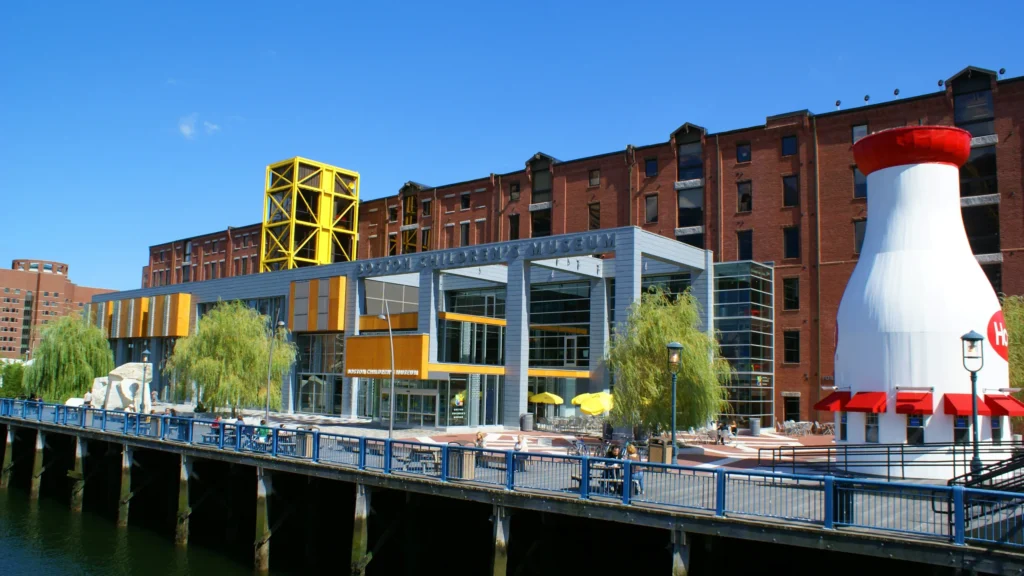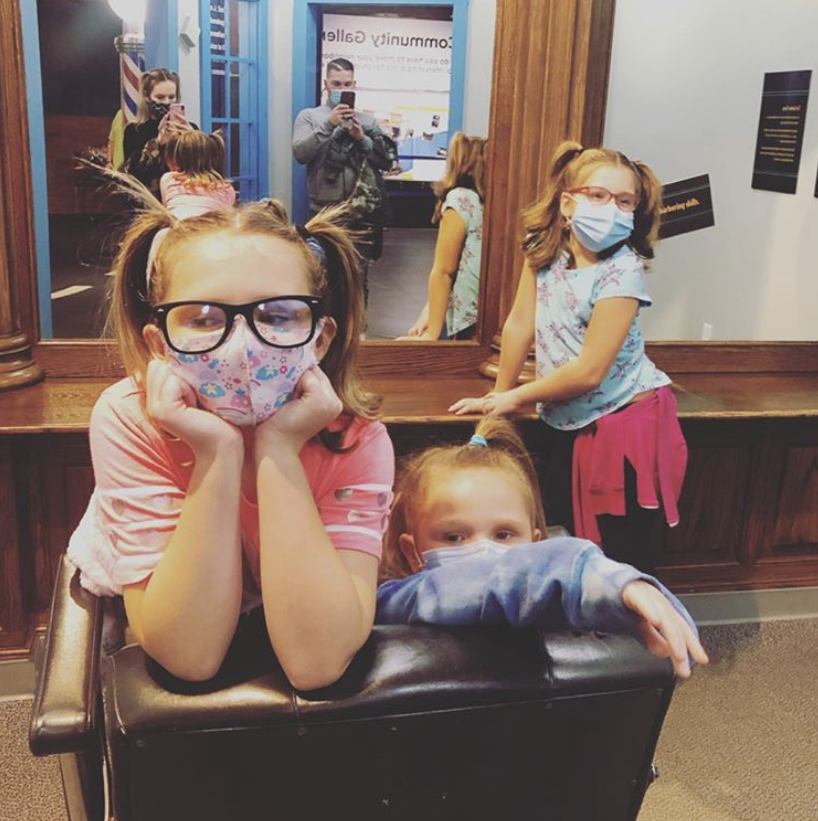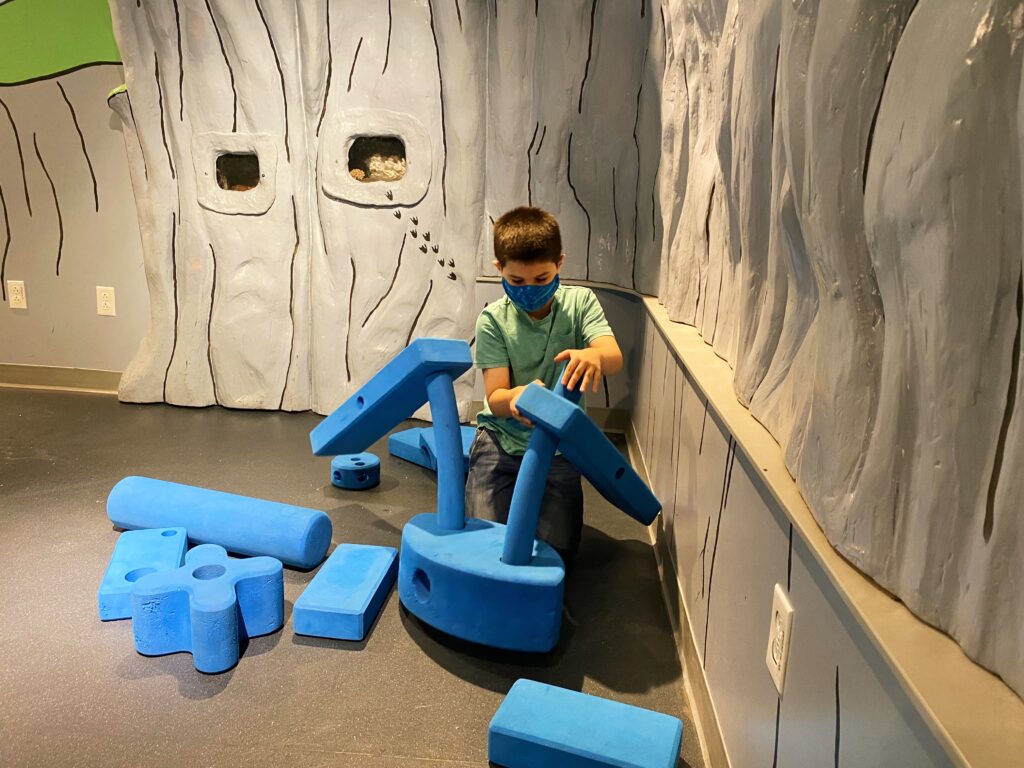Learning Themes
Home » Learning Themes
Explore It Enrichment Pods will progress through a series of themed, hands-on modules created by Boston Children’s Museum educators. Explore It activities aim to provide opportunities for students to build, create, write, use technology, safely work together, share ideas, and express themselves. Each day after school, students will have a chance to explore the Museum and participate in several hands-on, minds-on activities, move their bodies for some physical activity, and reflect on what they’ve learned at the end of the day. For more information about the structure of a student’s day in an enrichment pod, please read our FAQ.
Enrichment Pod Explore It activities are meant to foster STEAM Habits of Mind – ways of thinking – that children can develop by inventing, exploring, and creating. These STEAM Habits of Mind include Curiosity, Critical Thinking, Creativity, Persistence, and Problem Solving.
Register for Boston Children’s Museum’s Explore It Enrichment Pods here.
Explore It Themes and Activities
Week 1: In The Wild
Students will spend the first week of the enrichment pod in the wild, exploring animal habitats, plant life, and our environment. This theme will encourage students to reflect on their past experiences in nature and think critically and creatively about animals, plants, and the environment.
Example activities include:
- Exploring Ice: Students are given ice and a variety of materials they can use to customize their own experiment and answer questions of their choosing, such as: What happens when you put salt on ice? How does ice break? How long does it take to melt? What happens to an ice cube that melts with food coloring in it?
- Build an Animal Crossing: Students are given a narrative-based challenge to help an animal cross a busy road to get to the other side of their habitat. Students will start by planning a design with pencil and paper. Then, they will use building materials to create the crossing, and test it.
- Glow Bugs: Students will learn about bioluminescence and why certain animals have body parts that light up. Then, using a battery, LED bulb, and a variety of craft materials, students will create their own “Glow Bug,” or light-up creature, and create a story explaining why the creature has a light-up body part.
Week 2: In Your Imagination
Students will spend the second week using their imaginations! Students will have the opportunity to reflect on their own exposure to fiction, stories, and fantasy by participating in activities that challenge them to practice storytelling, develop characters, and create artwork and animations.
Example activities include:
- Shadow Puppets: Students will use cellophane and a variety of craft materials to create shadow puppets. Then, students will create a short dialogue and narrative using the shadow puppets, learning about light and shadows along the way! How does distance from the light source impact the size of the shadow? How does light interact with transparent or translucent materials?
- Stop Motion Animation: Students will work in small groups to create a short storyboard and then use an app to create a stop motion animation movies by taking a series of photographs that are stitched together using a fast frame rate. This activity will encourage them to think about storytelling, characters, and how they work together, share ideas, and delegate responsibilities.
- Music Makers: Students will use a variety of craft and recycled materials to invent their own instruments. First, they will conceptualize and design their instrument on paper. How do different materials create sounds? How will the instrument be “played”? Then, students will build their instrument and even perform if they’d like to.
Week 3: In Outer Space
Students will spend the third week of Explore It in outer space. This theme will guide students into thinking about Earth and other planets in our solar system, the Sun, and about how humans have explored space – learning about the experiences of astronauts and NASA engineers.
Example activities include:
- Build a Moon Habitat: Students will start this activity by discussing what the moon is like for a human – touching upon concepts of gravity, breathable air, and atmosphere. Then, students will design and build their own moon habitat using a variety of materials to show their understanding of how humans could live on the Moon.
- Design a Rocket: What are the major features of a rocket? How does a rocket’s size or number of fins affect how it flies? Students will consider the different variables that might affect a rocket’s flight as they design and create their own rocket. Then they will launch it and redesign their rocket to improve their design.
- Alien Slime: Exploration of outer space has helped humans learn about the possibility of alien life in other solar systems and galaxies. Use a few different ingredients to make your own out of-this-world slime! Decide if your slime is alien goo from another planet or full of stars from the universe.
Week 4: In The Construction Zone
Students will return to Earth to find themselves in the construction zone where they will focus on building structures and communities. The activities will offer a mixture of engineering challenges and construction activities, as well as a glimpse into relevant careers, urban planning, and construction vehicles.
Example activities include:
- Engineering Challenges: Using LEGO, KEVA blocks, and other building components, students will provide their own solutions to challenges. Can you make a tower that is very tall? Can you build a structure that holds a certain amount of weight? Can you make a bridge with a span that crosses a river?
- Plan a Cardboard City: Students will begin this activity by thinking about important parts of a city. What buildings do most cities have? Where would the roads be? How large is the city? Students start by designing the city on paper, then they use cardboard, tape, and craft supplies to build the city. What is the name of your city? Are you the mayor? How many people live there? Where do they live?
- Create Reflective Accessories: Safety is an important factor when working on a construction site. Students will learn about the various safety accessories, gear, and equipment. Then, students will use craft materials to create their own reflective wearable to keep them safe on a construction site.
Week 5: In The Water
Students will spend the fifth week of Explore It in the water. Activities will explore how marine life is different from land habitats, and how humans have explored the bodies of water on Earth. Students will also learn about the scientific properties of water and how important water is to all life and the history of Earth.
Example activities include:
- Boat Building: Students will explore the shape and design of different types of water vessels such as boats, ships, canoes, and more. Then, after designing their ship on paper, students will use craft materials to build their own boat and test it in water. Does it float? Does it hold weight?
- Wiggly Water: This activity is an intersection of art and science. Students will place droplets of food coloring (colored water) on parchment paper and use straws to apply air that pushes the droplets across the paper. In this way, students can explore what happens when different colors combine, and how water interacts with air, surfaces, and other water droplets.
- Bubbles Explorations: Students will use a variety of materials to explore the property of bubble solution. How can you make a bubble using basic craft materials? What shape will it be? What does it feel like?
Week 6: In the Human Body
Students will spend the sixth week learning about what happens in the human body. This theme will give students opportunities to explore their senses and parts of their body, while also learning a bit about food and health.
Example activities include:
- Build a mechanical grabber device: Sometimes, like during a pandemic, it’s not a good idea to use our hands to touch something. Or sometimes items can be hard to reach. Students will engineer a mechanical hand (grabber device) that can be used to pick up and put down different objects that are at least 12 inches / 30 centimeters away from you.
- Making Art With Your Body: Students will start by seeing examples of art that incorporate some image or part of the human form. Then, students will be given large paper and a variety of art/craft materials to create their art with their own body. Students can use their palm prints, trace body parts, stamp with their elbows, and be creative!
- Testing Your Senses: Students will carry out a series of challenges and experiments that test their senses. Can you find your blind spot? Can you identify the mystery sound? Then, students will try to create their own way of testing one or multiple senses.



